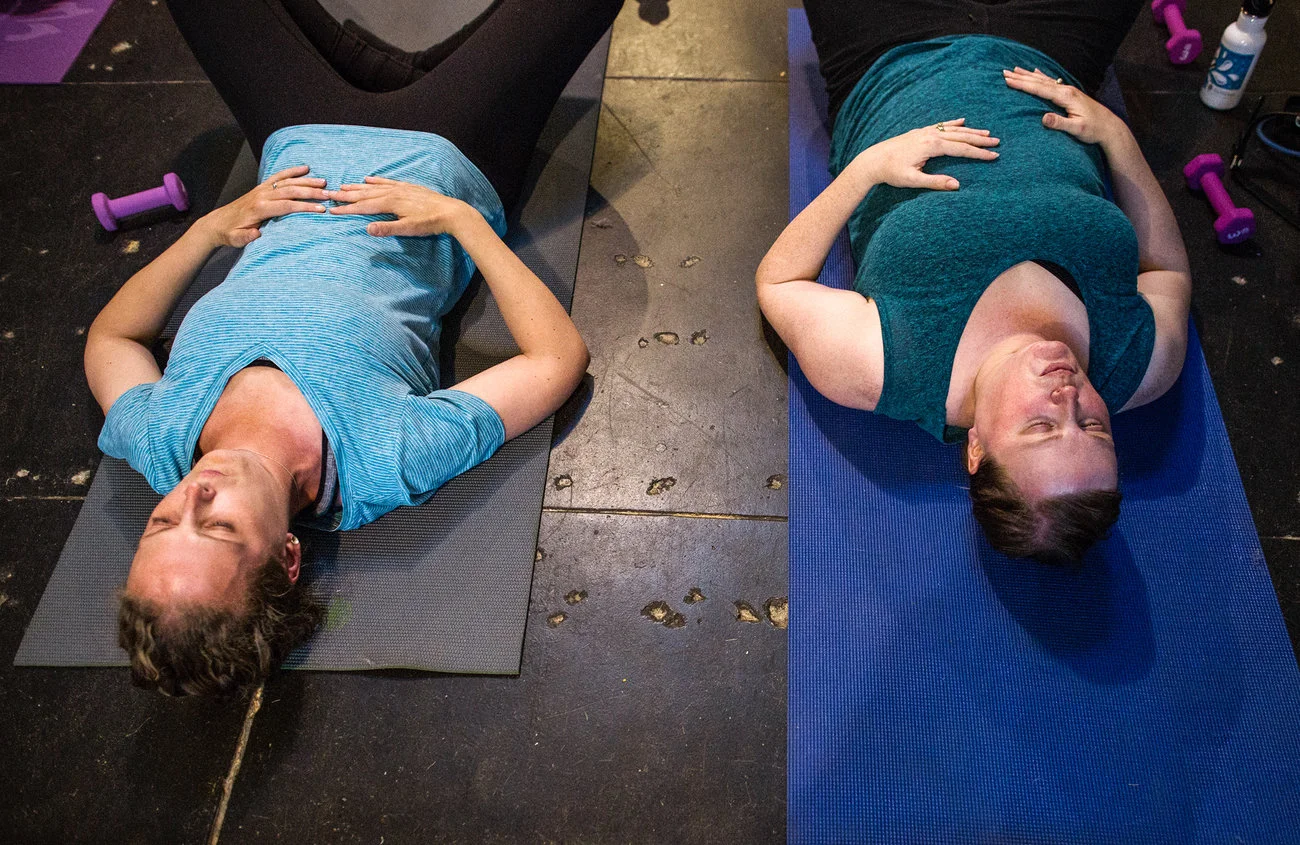We all have aches and pains that we deal with on a regular basis but sometimes we just can't seem to shake an injury on our own. What are some signs that you should seek treatment now rather than wait?
Is How You're Sitting Giving You Headaches?
Headaches are a pain, literally and figuratively. They sneak up on you, slowly making you crankier and crankier, ruining your day. Headaches are attributed to many different causes; often we say “I’m stressed” or “I need to drink more water” or even “I didn’t get enough sleep.” But did you know many headaches can be tied to our posture and muscle tightness in our neck?
Leave your Stress Behind this Fall
Sources of stress can appear endless. Our new normal state of always being available and “on-call” is stressful, but leave your phone at home and the mind goes crazy with what it could be missing or that friends, family and even work can get worried that they can’t get in touch with you right away. The truth is, stress is unavoidable.
4 Tips to Running Pain Free
We Were Built to Run
Get Back in Shape after Baby
Neck Pain: Out with the Old, In with the New
Modern technology has created a lot of flexibility in workspaces. The traditional 9-5 is morphing, with more people working remotely from wherever they are. That might mean creating space at home or having a moveable setup for use in a coffee shop or conference room. Being fluid with workspaces helps people escape the problem of being stuck in a cubicle all day, but it has downsides too.
It means your “office” may be anything from a couch to an Uber. Plus, the line between work and home is becoming blurry. When we used to be able to power down at the end of the day, we now have 24-hour access to emails and texts, and often use phones and tablets for our entertainment well into the night.
Which leads to my next question: How is your neck feeling?
If you answer is “not great,” you aren’t alone. An increase in driving, computer work, and phone use is upping the daily physical stress for a lot of us. As an acupuncturist, I see patients with a variety of issues, but one part of the body that continually frustrates people is their tight neck. Our physical therapists see this a lot too. We even joke that “text neck” is becoming an epidemic.
Symptoms mentioned include tension and discomfort, pops and cracks in the spine, head-forward posture, knots, and muscle spasms. The neck is a common storage place for mental and emotional strain: Some of us literally wear our stress with our shoulders creeping closer to our ears as energy demands mount.
So, where do we go from here?
Step one is to be mindful about how we hold ourselves. Step two is integrating positive habits to minimize the damage.
In terms of acupuncture, any kind of pain is considered stagnation, or blockage, in the free flow of blood and energy through the body. Solving pain conditions requires unblocking “stuck” regions of the body and keeping it unblocked. To do that, we insert small needles into the affected area, unblocking the channels and promoting relaxation of muscles, improved blood flow, and reduction of inflammation, all easing the pain.
Being proactive is critical, too. Try integrating some of the following healthy habits:
- Retrain your muscles to let go at the end of the day: That could be with a short stretch routine or use of a warm herbal wrap. The warmth will encourage blood flow and help relax your muscles. It also retrains your muscles to let go rather than stay tight.
- Hang upside down: If you aren’t able to be completely upside down, at least get your head below your heart. Try a forward bend to release tension and allow your head and shoulders to fully relax and hang heavily.
- Pay attention to your ergonomic set-up: Establish a primary typing zone with a set-up that reduces strain on your neck and shoulders.
- Change positions often: Get up to use the restroom, roll your shoulders, take a phone call while walking, stretch your arms above your head. Do anything you can to get positional variety into your day.
- Come in for physical therapy: Our PT's can prescribe exercises specific to your neck’s needs.
- Try yoga: Flow your way to wellness in one of our classes to lengthen and strengthen your muscles.
Transition Your Body into Spring
What to Know when Breastfeeding
Proactive Health and Wellness
New Mommy and Back Pain
Diastasis Recti What???
Why We Integrate
Does Smoking Increase Pain while Recovering from Surgery?
What to Expect from the Pelvic Floor in Pregnancy & Post-partum
Is your Baby Breech?
Injury Treatment: Ice v. Heat
How to Set Up an Ergonomic Workstation
Pelvic floor muscles are core muscles!
The reason I love working with my pregnant patients is that pregnancy is such a great time to build a wellness routine. It is also good to clarify exercise guidelines and to encourage women to check with their obstetricians in case there are special circumstances around their pregnancy that would affect their exercise tolerance.
The American Congress of Obstetricians and Gynecologists publishes recommendations that can be found here:
Exercise During Pregnancy
There is also a lot of misinformation out there regarding pregnancy and exercise, including kegels prenatally and post-partum. While these are important core muscles, it is important to remember that they need to be relaxed and flexible in order to birth a baby.
Many women will begin kegel exercises for the first time during pregnancy. Therefore, I recommend only 2 sets of 10 repetitions of "quick flicks". These are quick kegels that you do not hold...the pace is "tighten, relax...tighten, relax" and so on. Ten repetitions should only take 10 seconds!
Post-partum is a wonderful time to pick up kegels to restore normal pelvic floor muscle tone, increase circulation to the pelvis and to promote healing in the event of episiotomey or tearing. Return to "quick flicks", but increase to 5 sets of 10 repetitions. Then incorporate kegels that you hold for up to a count of 20 seconds-build up to 2 sets of 10 repetitions.
Please note that it is very important not to do a kegel to stop and start the flow of urine as an exercise! It can increase your risk of a urinary tract or kidney infection!
How do I do a kegel, you ask?
First, lying down or sitting in a relaxed position, imagine your pelvic floor muscles. These are the muscles you contract to stop the flow of urine or from passing gas. Trying not to tighten you abdominal or buttock muscles, gently contract your pelvic floor muscles. Imagine lifting up and in with the muscles, feeling them tighten and subsequently relax when you release them. As you do a kegel, begin with tightening gently to avoid using other muscles such as your abdominals. Gradually, work towards holding the kegel longer and contracting more forcefully.
- Nancy Charlebois PT, MT
Hip Flexors are key to a happy low back & hips!
 The hip flexors are an oft-neglected muscle group that can contribute to lower back or hip pain and stiffness. They often get tight from sitting (think office, car, evening tv or reading), or from repetitive motions bringing the knee in front of the hip including running, biking or walking! So basically, if you are a human, listen up! Your hip flexors may be yearning for attention! :)
The hip flexors are an oft-neglected muscle group that can contribute to lower back or hip pain and stiffness. They often get tight from sitting (think office, car, evening tv or reading), or from repetitive motions bringing the knee in front of the hip including running, biking or walking! So basically, if you are a human, listen up! Your hip flexors may be yearning for attention! :)
What are the hip flexors? Specifically, there are two primary hip flexor muscles - the iliacus and the psoas- that originate on the front of the spine in the lower back and the front of the pelvis, and run to the front of the hips. If tight, they can make it tough to stand up straight, or they can pull your lower back into an excessive curve, tilting your pelvis forward and causing extra stress and potential pain.
How to effectively stretch your hip flexors: Hip flexors are tough to stretch correctly, because it is easy to compensate for tight hip flexors by overextending your low back, or by bringing your knee in front of your hip during stretches. When stretching, a general rule of thumb is to contract your abs, tucking your tailbone underneath you, and hold this position while stretching to prevent excess stress in the low back and to ensure an effective stretch.
Great hip flexor stretches are illustrated on a comprehensive website created by core performance. Just follow this link: Core Performance, or from the front page select the heading "exercises" from the footer, then select "movements", and search for (they are listed in alphabetical order): AIS Quad/Hip Flexor Stretch - Sidelying Glute Activation - Half Kneeling Forward Lunge with Rotation
A comfortable stretching sensation should be felt in the front of your hip and thigh WITHOUT low back strain or compression- remember to keep your abs tight, and tailbone tucked! Dynamic stretches (~5-10 second hold, moving into and out of the stretch) are recommended before activity (running, biking). Prolonged stretches (20-30 second static hold) are indicated to actually improve muscle length. Happy stretching!
- Heather Wacksman MSPT





















